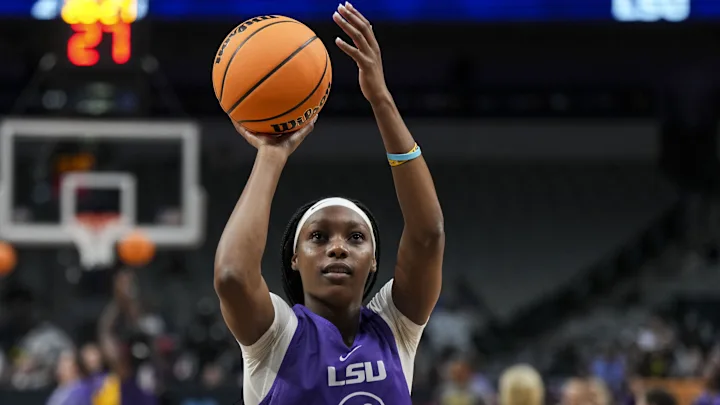The decision for Amani Bartlett to transfer to a Big 12 school signifies not just a change in scenery, but an important step in her basketball career. The Big 12 is known for its competitive atmosphere and high-level basketball programs, and Bartlett’s move indicates her desire to compete at an even higher level. This transition, while significant, is not uncommon in college athletics, where players seek to maximize their opportunities for development and exposure.
When players transfer from one program to another, it’s often a calculated decision based on various aspects of their career. For Amani Bartlett, it seems that the opportunity to play more regularly and in a different competitive environment were key factors in her decision. Many athletes choose to transfer when they feel their growth is plateauing in their current setting, or if they believe a change in coaching style, team culture, or conference alignment will better suit their skills and ambitions.
As Bartlett embarks on her journey in the Big 12, it is clear that her goal is to continue to improve and become an even more prominent force on the court. The Big 12, with its strong basketball programs and robust competition, provides an ideal platform for her to showcase her skills and develop as a player.
LSU Women’s Basketball has long been a powerhouse in collegiate sports, and under head coach Kim Mulkey, the program has continued to build a legacy of excellence. However, like any team, it faces challenges when players decide to transfer, as it shakes up the roster dynamics and creates opportunities for other players to step up.
In the wake of Bartlett’s departure, LSU will likely focus on integrating new talent from the transfer portal or strengthening the existing roster. The team has a strong recruiting base and a talented coaching staff, which will help them navigate through roster changes while maintaining a high level of competition.
For coach Mulkey, managing such transitions is part of the job, but it does highlight the ever-evolving nature of college athletics. Her experience and expertise in the field will no doubt allow her to reshape the team’s lineup to fit the strategic goals of the upcoming seasons.
The Big 12 Conference has emerged as a dominant force in women’s basketball, with schools such as Baylor, Iowa State, and Oklahoma State regularly making deep runs in the NCAA Tournament. Moving to this conference is an exciting challenge for any player, and it can be a significant stepping stone in the careers of those who thrive under pressure.
For Bartlett, transferring to a Big 12 school not only opens doors to more playing time but also places her in the midst of a competitive league known for its basketball pedigree. The intense rivalries and higher-caliber competition will push her to elevate her game to new heights. For many players, this transition is about more than just playing—it’s about learning how to rise to the occasion in front of larger crowds, against formidable opponents, and in high-stakes situations that can mold them into better athletes.
The transfer portal has significantly reshaped the landscape of college basketball, particularly in women’s sports. Players like Amani Bartlett are part of a larger trend in which athletes exercise more freedom to transfer between programs, looking for better opportunities, stronger programs, or simply a better fit for their personal and athletic goals.
In recent years, the transfer portal has seen an influx of athletes seeking to switch schools, with some programs building their entire rosters by recruiting from this pool. The trend reflects the increasing importance of player agency in collegiate athletics and underscores the fact that players are taking more control over their careers.
However, while the transfer portal provides more options for players, it also presents challenges for coaches. Maintaining team cohesion and ensuring that new players mesh well with existing ones can take time and effort. For LSU, this period of roster change may bring some growing pains, but it’s also an opportunity for new players to prove themselves and for the coaching staff to develop a new team chemistry.
Looking ahead, Amani Bartlett has the opportunity to redefine her collegiate basketball career in the Big 12. She will likely face stiff competition, but with her previous experience at LSU, she’s already demonstrated that she can handle the pressures of high-level basketball.
For Bartlett, this move is not just a fresh start, but a chance to elevate her game to new heights. Whether she’s starting for her new team or taking on a significant role off the bench, she will undoubtedly be looking to make an impact and contribute to her new school’s success.
As Amani Bartlett moves to a Big 12 school, she enters a new chapter in her basketball career, one filled with new challenges and opportunities. Her transfer from LSU marks a pivotal moment in her development, and her decision to join one of the top conferences in women’s college basketball speaks to her aspirations for greatness.
While LSU may feel the absence of Bartlett’s contributions, the program remains strong, continuing its tradition of excellence under coach Kim Mulkey. On the other hand, Bartlett’s future is full of promise, as the Big 12 provides her with the platform to showcase her abilities against some of the best teams in the country.
Ultimately, Bartlett’s transfer reflects the evolving landscape of college basketball, where athletes make strategic moves to maximize their potential. For fans of women’s basketball, her journey will be one to watch as she continues to grow and push the boundaries of her talent on a bigger stage.



